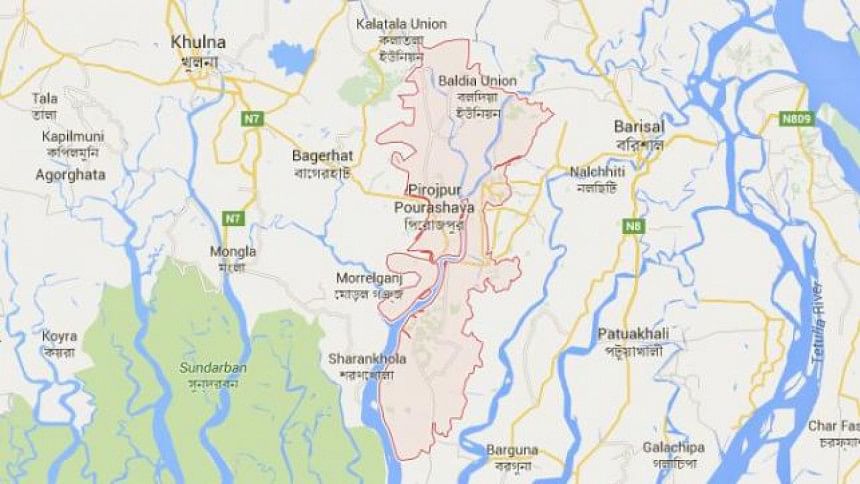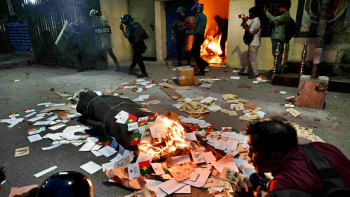Relief for Covid, Amphan-Hit People: Those who needed it most got the least

The state of relief distribution in the country can perhaps be gauged through a detailed look at one district during two recent crises -- cyclone Amphan and the ongoing coronavirus pandemic.
The upazilas of Pirojpur most in need, with the highest poverty rates, received the least proportion of general relief, revealed a study yesterday.
Kaukhali upazila, for example, has a poverty rate of 52.2 percent, where most of its residents reside below the poverty line. With only seven upazilas in the district, Kaukhali received only 9.1 percent of the relief rice and 5.7 percent of the cash allocated for the district.
A similar situation was seen in Indurkani and Najirpur upazilas in spite of the fact that half of their population lives below the poverty rate.
On the other hand, Mathbaria upazila has a 38 percent poverty rate, but got as much as 20 percent of the rice and cash for the district.
The findings were revealed in a virtual discussion organised by Centre for Policy Dialogue, Oxfam, and European Union. The trio studied the relief distribution patterns in 13 districts, and shared their findings about Pirojpur yesterday.
The research was titled "Relief Support and Agricultural Incentives in Response to Covid-19 and 'Amphan': The Effectiveness of Public Service Delivery".
In Pirojpur, a significant part of the population is involved in non-agricultural daily wage labour, and there are less people farming their own lands.
The list of beneficiaries could not be gotten in time, said government officials. They said that haphazard directions from the central government further made their job difficult.
In Indurkani upazila, a list of 4,000 people was sent to the central government for the one-time cash relief of Tk 2,500 -- but only 60 percent of those on the list received relief, found the study team.
In Pirojpur, there were 1,60,000 beneficiaries of rice and cash. Even though all of the relief was distributed, local government officials interviewed said they failed to reach all the people in need.
Field-level workers also told researchers that they did not get sufficient time to make a list of everyone in need of relief.
For the cash transfer, upazila-level officers were given a week to make lists of beneficiaries, but had to abide by strict conditions, such as the phone number of the beneficiary needing to match that of the mobile money transfer account.
Since not everyone had access to digital financial services, this proved to be a problem, and the district-level target of listing 75,000 beneficiaries could not be reached, found researchers. "Furthermore, the process took a month," said Towfiqul Islam Khan, Senior Research Fellow at CPD.
"People who came back to the villages from the cities during lockdown were also left behind when it came to distribution of relief," said Khan.
Meanwhile, the researchers found that the district coordination team did not have data about the number of beneficiaries in each upazila, and what the upazila-wise allocation of relief is.
Dr Debapriya Bhattacharya, distinguished fellow of CPD, stated that relief distribution should be dependent on poverty levels instead of population sizes.
"However, the level of coordination and data needed to accomplish this is often absent," he said.
A similar situation was observed in the distribution of free Boro rice seeds to farmers seeking relief.
Even though free seeds of Boro rice, worth Tk 76 lakh, were given to "card-holding" farmers affected by the cyclone, the last time the list of card holders was updated was in 2014.
Field-level officers told researchers that only 60 percent of the total relief demand for seeds could be met with the current allocation.
"The relief packages could not be distributed to farmers without identity cards," said Khan.
Even though the number of card-holding farmers in Pirojpur Sadar and Nesarabad was fewer, those two upazilas got more of the allocated amount of free seeds.
"There needs to be a local level database for relief-seekers. This needs to be accessible not just centrally, but locally," said Khan.
"There also needs to be initiatives to incorporate those too poor to have phone numbers," he added.
SM Rezaul Karim, minister of fisheries and livestock and lawmaker of Pirojpur Sadar, said, "Even though we did not fulfil expectations, we can say that we tried."
A total of 2,60,000 families got relief of some sort during the pandemic, said the deputy commissioner of Pirojpur, Abu Ali Md Sajjad Hossain
Dr Mustafizur Rahman, distinguished fellow at CPD, moderated the event. Dr Fahmida Khatun, executive director of CPD, and Dr Dipankar Dutta, the country director of Oxfam in Bangladesh, also spoke at the event.

 For all latest news, follow The Daily Star's Google News channel.
For all latest news, follow The Daily Star's Google News channel. 



Comments